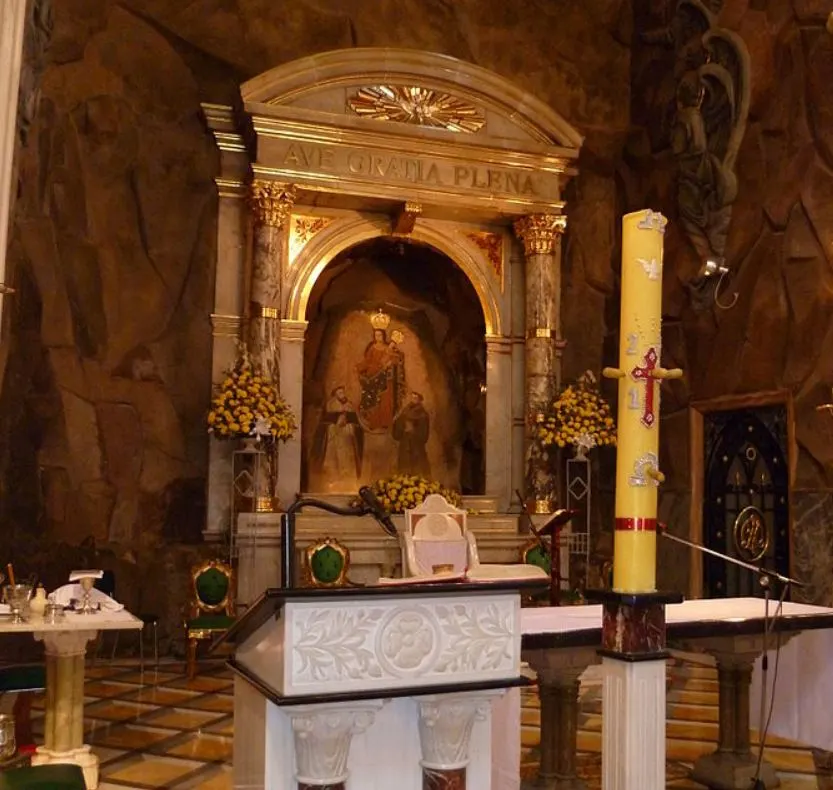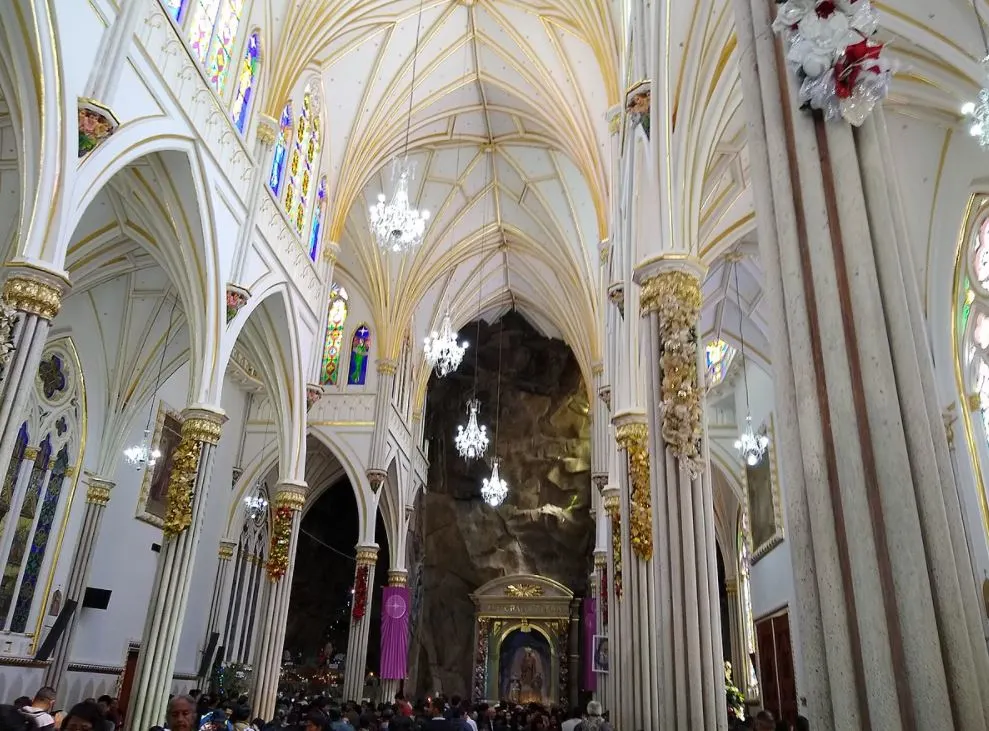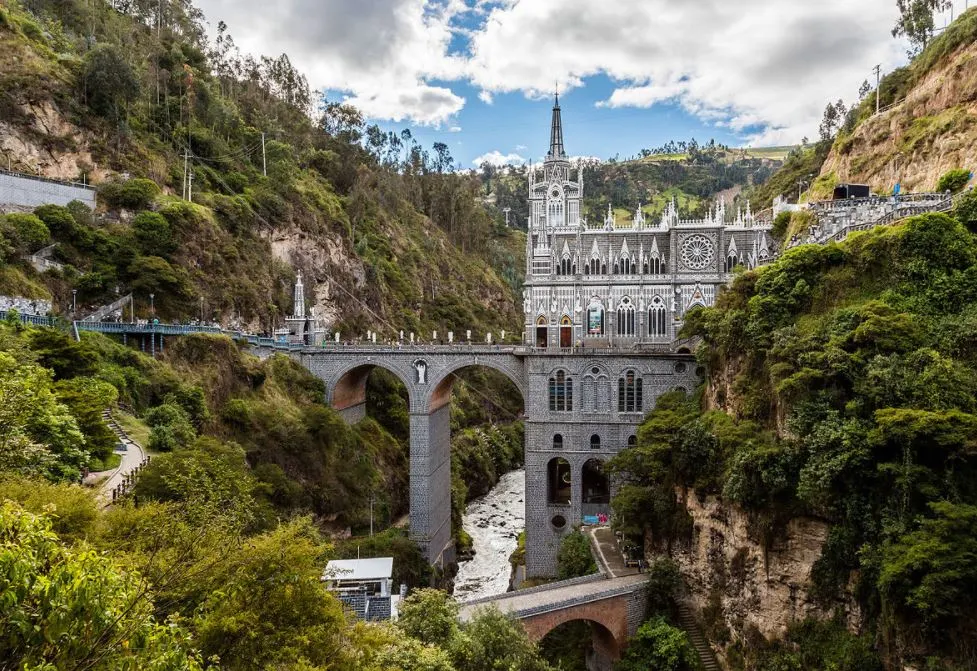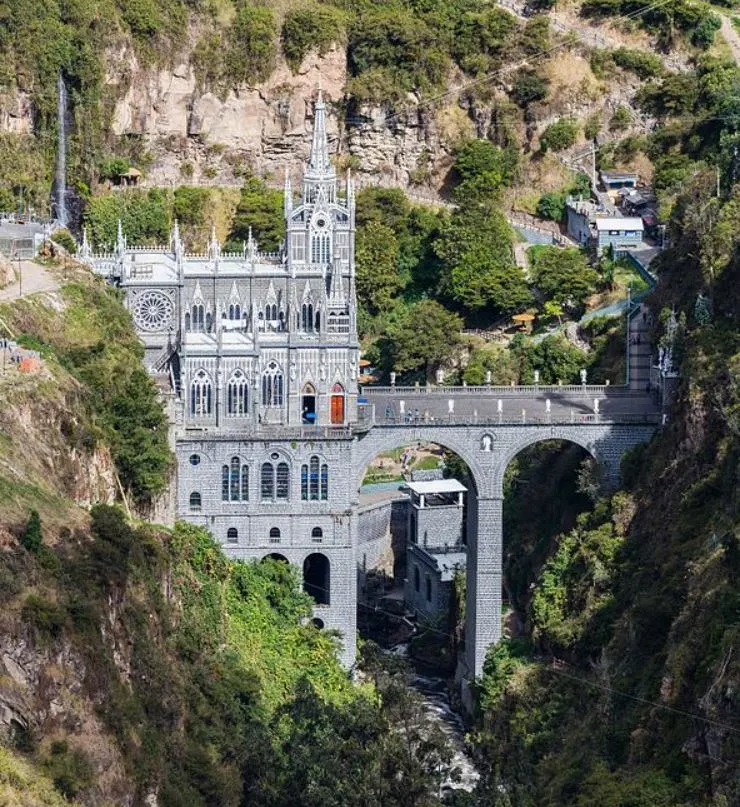You’ll hardly come across a more astounding church in your life than this fascinating structure in the southwest of Colombia, South America.
In this article, you’ll discover the most interesting facts about Las Lajas Sanctuary, arguably the most picturesque church in the world.
1. It was built in a canyon in Colombia’s Nariño department
The Las Lajas Sanctuary or “Las Lajas Shrine” is officially known as the “National Shrine Basilica of Our Lady of Las Lajas” or Basílica Santuario Nacional de Nuestra Señora de las Lajas” in Spanish.
The location of this amazing Gothic Revival Cathedral is most certainly just as impressive as this famous church in South America itself because it’s situated inside the wonderful canyon of the Guáitara River.
This is situated in the Nariño Department of Colombia in the utmost southwestern corner of the country, bordering Ecuador to the north and the Pacific Ocean to the west.
The city of Ipiales is located just a few kilometers to the west of the church and the capital of this department, Pasto, is located about 50 kilometers (30 miles) to the northeast.

2. The church was built because of an 18th-century miracle
The church was built in this location because of a series of miracles that presumably happened here in the 18th century, the first one in the year 1754.
According to the legend, a woman named Maria Meneses de Quiñones and her daughter Rosa sought shelter from a storm near the Guaitara river. Shortly after, daughter Rosa started shouting that she had seen the “Mestiza,” a reference to the Virgin Mary.
Following the death of Rosa, the woman’s mother returned to this spot to pray for her daughter’s soul, and somehow Rosa miraculously revived.
Shortly after this incident, the first shrine in honor of the Virgin Mary was built here. This also means that the church was dedicated to the veneration of Our Lady of Las Lajas Ipiales.

3. A Spanish monk first mentioned a shrine in the 18th century
Perhaps the most fascinating miracle that happened in this location, and why the church was built in this remarkable location inside the canyon, can still be seen today.
The woman brought a local priest and some other people to the spot and upon their arrival, the image of the Virgin Mary miraculously appeared on a rock. Nobody knows who carved it and this image can still be seen on this rock today behind the altar at the end of the church.
The first European to visit the exact location of the miracle was a Spanish Franciscan monk named Juan de Santa Gertrudis (1724-1799). He was also the first to mention the existence of a shrine on this location in his work “Maravillas de la Naturaleza” or “Wonders of Nature” in Book III, Part 2.

4. There were two shrines here before the church was built
The first shrine was built shortly after the miracle had happened and after the image of the Virgin Mary had appeared on this rock. This original shrine was nothing more than a simple construction made of straw and wood halfway through the 18th century but quickly became a very popular pilgrimage destination.
A second version of the shrine was built in 1802 in combination with the original version of the bridge which now allows access to the church. This further increased the popularity of the shrine throughout the 19th century.

5. It took over 33 years before the church was completed
The plans to build a church became concrete in the early 20th century and money was being raised from local churchgoers to fund the construction. This was a similar approach to the Sacré Coeur In Paris which also took a long time to build due to budget constraints.
The construction didn’t start until January 1, 1916, which was when the cornerstone of the building was laid. It would eventually take well over 3 decades before the building to be completed.
The dedication of the church happened on August 20, 1949, over 33 years after the construction had started.

6. The name of the church refers to the stones on the location
So why is this church referred to as the “Las Lajas Sanctuary?”
The word “laja” literally translates to “slab” and is a reference to the type of sedimentary rock that is found in this region. It’s comparable to other types of fine-grained rocks such as shale or slate.
Also, when Maria Meneses de Quiñones and her daughter Rosa sought shelter, they hid between the giant lajas near the Guáitara River, the location where the presumed miracle happened.

7. It rises over 100 meters above the bottom of the canyon
The fact that locals donated their hard-earned money to fund the construction of the church wasn’t the only reason why it took over 33 years for the structure to be completed.
The location of the building isn’t exactly an easy spot to build a monumental church and not the place where you would even think of starting a construction project.
They did manage to pull it off, though, and the church eventually ended up reaching a height of over 100 meters (330 feet) above the floor of the canyon below. The bridge that allows access to the church reaches a total height of about 50 meters (175 feet) as well.

8. The church was chosen as one of the 7 Wonders of Columbia
The image of the Virgin Mary on the stone at the back of the church received a decree of canonical coronation from the Pope just 3 years after the church was completed. This happened on September 15, 1952.
In the year 1994, the status of the church was elevated to that of a minor basilica as well, another dedication by the Pope which emphasizes the importance of the church for the Roman Catholic faith.
All these events in combination with the fact that the church is located in an incredibly amazing location have resulted in it being voted as one of the 7 Wonders of Colombia, a competition organized by the country’s leading newspaper “El Tiempo.” Only the spectacular Salt Cathedral of Zipaquirá received more votes in this competition!



